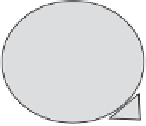Database Reference
In-Depth Information
RELATIONAL
OBJECT
-
Complex
Objects
SQL-3
Support
Figure 20-9
Amalgam of object/relational features.
information must be generated by managing all that digital data and combining
these with textual and numerical data.
Sophistication of Business Applications
Core business applications are
becoming more and more sophisticated. The continuing decline in hardware and
software costs promotes the enhancement of business applications with diagrams,
pictures, images, audio, and video clips.
An insurance application would add pictures to the claims database file. A man-
ufacturing application would augment the parts inventory with intricate diagrams.
An auction application would capture digital images of upscale art and move the
images around preauction exhibitions worldwide. A decision support system would
allow sophisticated queries on complex data.
What is an ORDBMS?
The features of ORDBMSs go well beyond those of OODBMSs and those of rela-
tional DBMSs. The features and functions result from an amalgam of the two.
Michael Stonebraker defines ORDBMSs as follows: DBMSs that support a
dialect of SQL-3, include nontraditional tools, and optimize for complex SQL-3
queries are called ORDBMSs. Because these support SQL, they are relational;
because they support complex data, they are object-oriented.
Figure 20-9 portrays this amalgam between object orientation and relational
features.
Feature Highlights
Apart from the strengths gained from the amalgam of object and relational attrib-
utes in general, the following distinct features make ORDBMS superior to either
OODBMS or RDBMS.
Base Data Type Extension
SQL-92 allows simple data types: integer, floating
point number, character string, date/time, numerical, and decimal. In organizations
with worldwide locations, two-dimensional data types would be required. Some
useful data types would include 2-D polygon, 2-D trapezoid, 2-D ellipse, and so on.
Advanced Functions
Extensions also cover functions such as
•
Contained (point, circle) returns Boolean
•
Overlaps(circle, polygon) returns Boolean














Search WWH ::

Custom Search